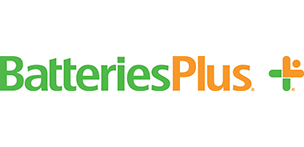 The average compact fluorescent light bulb (CFL) uses 75% less energy than incandescent light bulbs, according to the Environmental Protection Agency (EPA). The EPA also reminds us that CFLs can help you “save money, use less energy, reduce light bulb changes and lower greenhouse gas emissions, which lead to climate change.”
The average compact fluorescent light bulb (CFL) uses 75% less energy than incandescent light bulbs, according to the Environmental Protection Agency (EPA). The EPA also reminds us that CFLs can help you “save money, use less energy, reduce light bulb changes and lower greenhouse gas emissions, which lead to climate change.”
It is important to know that CFLs also contain a small amount of mercury sealed within their glass tubing. Mercury is an important part of a CFL because it allows the bulb to be an energy-efficient light source. No mercury is released when the bulbs are intact (not broken) or in use. The mercury content in CFLs has dropped an average of at least 20% or more in the past several years, according to
Energy Star.
Because CFLs contain mercury, and mercury is harmful to the environment, every CFL needs to be disposed of properly. Some states even prohibit the disposal of fluorescent and CFL bulbs in their landfills.
Batteries Plus, with more than 540 stores (as of publication, and growing) across the U.S., has an extensive recycling program for CFL bulbs, fluorescent tubes, high-intensity discharge bulbs and spend ballasts (the device in fluorescent lamps that limits the current through the tube). The company makes sure all bulbs are recycled properly and will dispose of bulbs that cannot be recycled in an environmentally safe way.
Batteries Plus not only recycles CFLs, but also has a broad range of CFLs for purchase. CFL bulbs are available in different color temperatures, including soft white, cool white, daylight and bright white, along with different shapes like globe, torpedo and bent-tip flame.
Of course, Batteries Plus also recycles a plethora of
battery types as well.
Fees may apply. Please contact your closest Batteries Plus store for further information. For proper clean-up recommendations if a CFL breaks in your home, visit epa.gov/adminweb/cfl/.
 The average compact fluorescent light bulb (CFL) uses 75% less energy than incandescent light bulbs, according to the Environmental Protection Agency (EPA). The EPA also reminds us that CFLs can help you “save money, use less energy, reduce light bulb changes and lower greenhouse gas emissions, which lead to climate change.”
The average compact fluorescent light bulb (CFL) uses 75% less energy than incandescent light bulbs, according to the Environmental Protection Agency (EPA). The EPA also reminds us that CFLs can help you “save money, use less energy, reduce light bulb changes and lower greenhouse gas emissions, which lead to climate change.”